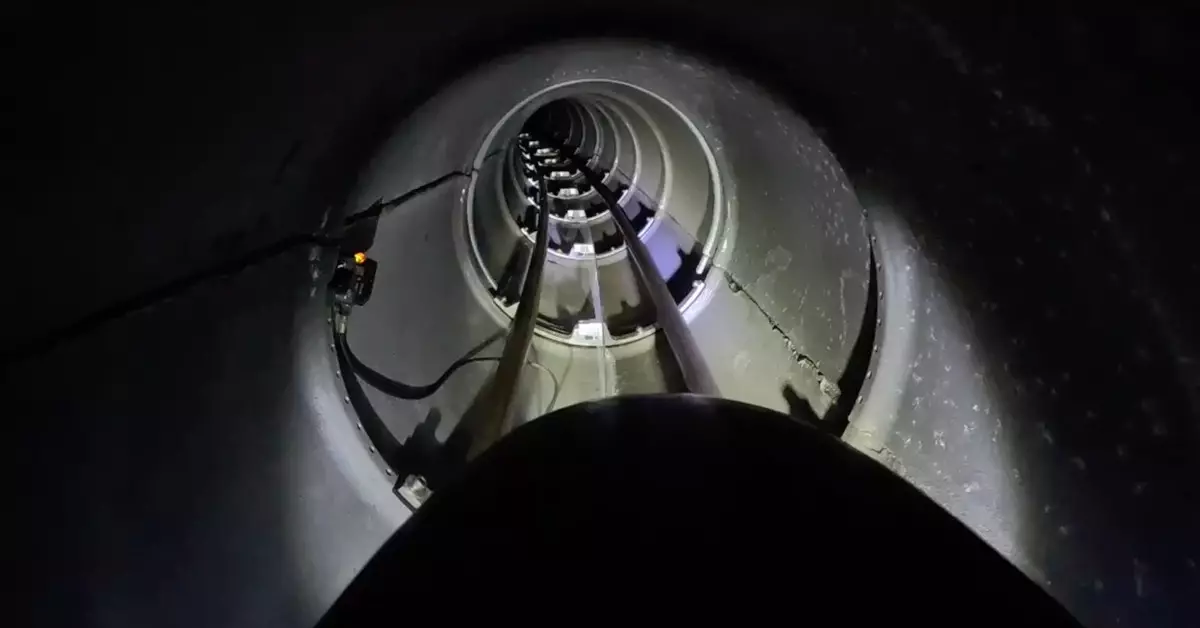Despite the numerous setbacks faced by the hyperloop concept since Elon Musk first introduced it in 2013, recent developments in Switzerland have reignited interest in this futuristic mode of transportation. While the hyperloop has often been deemed dead or relegated to the realm of vapid speculation, a noteworthy experiment at a 1/12th scale has unveiled itself, suggesting that the vision of ultra-fast travel through vacuum tubes may not be as implausible as it once seemed.
Elon Musk’s hyperloop envisioned a groundbreaking transportation system that could propel individuals and freight via aerodynamic capsules through low-pressure tubes, achieving speeds of up to 760 mph. It was designed as a revolutionary fifth mode of transport, capable of reshaping how we interact with urban environments and connect cities. Yet, for all its promise, the idea has stumbled over significant challenges, from financial instability within hyperloop startups to the arduous regulatory landscape that would need accommodating for such a drastic infrastructural shift.
Despite the tumultuous backdrop, interest has surged, particularly with recent advancements showcased by a Swiss consortium at the Federal Institute of Technology Lausanne (EPFL). Their latest endeavor, dubbed LIMITLESS, is a step toward providing substantial empirical data to validate or debunk the hyperloop’s feasibility.
In a modest but significant test, a circular track measuring just 125.6 meters (about 412 feet) circumference was used to conduct what was reported as the “longest” hyperloop trial to date. The achievement of 11.8 km (7.3 miles) at a speed of 40.7 km/h (25.3 mph) may not sound revolutionary, but the Swiss team claims that the results can be extrapolated to suggest potential full-scale speeds of up to 303.4 mph on longer journeys. This assertion, although ambitious, serves to illuminate the possible progressions and capabilities of such a transportation model.
During the tests, the consortium monitored various parameters critical to the hyperloop’s overall performance. Elements such as energy consumption, propulsion responses, and thermal management were scrutinized to provide an insightful overview of how these systems behave under conditions relevant to actual operation. This meticulous level of testing underscores a continuing commitment to empirically investigate the practicality of the hyperloop concept while potentially addressing previous criticisms surrounding the hypothesis’s vagueness.
Challenges Ahead: Skepticism Persists
Nonetheless, the skepticism surrounding the hyperloop remains fervent. Many analysts describe it as a “utopian vision” that seems perpetually out of reach, primarily due to its extensive need for funding and scalability. Potential investors remain wary given the extensive failures witnessed among other hyperloop-oriented companies in recent years. Economic viability, in an era of significant financial scrutiny and caution, could be a make-or-break factor for this ambitious undertaking.
The crucial aspect of this ongoing discourse is the notion that while advances are being made in test settings, actual full-scale implementations face numerous hurdles, including public acceptance and political will to invest in such infrastructural changes. The absence of any operating hyperloop system in the world today serves as a stark reminder of the challenges that lie ahead.
The Swiss team has ambitious plans, including developing a larger test track in the United States and preparing for freight transport trials. Amid increasingly fractured public opinion about Musk’s vision, Swisspod CEO Denis Tudor expressed a belief that each step taken might bring the dream of passenger travel closer to reality. Yet, one must question whether these aspirations stand the test of cold economic realities and political feasibility.
While the hyperloop dream appears to have been invigorated by Swiss experiments, the road to realization remains fraught with obstacles. The journey from a scale model of a hyperloop to a fully operational system servicing cities could well be characterized as a marathon rather than a sprint. Can this lofty vision finally find grounding in the world of practical transportation, or will it ultimately dissipate into the ether of ambitious but unviable projects? Only time will tell, but the narrative of the hyperloop continues to unfold, teetering between hope and skepticism.

